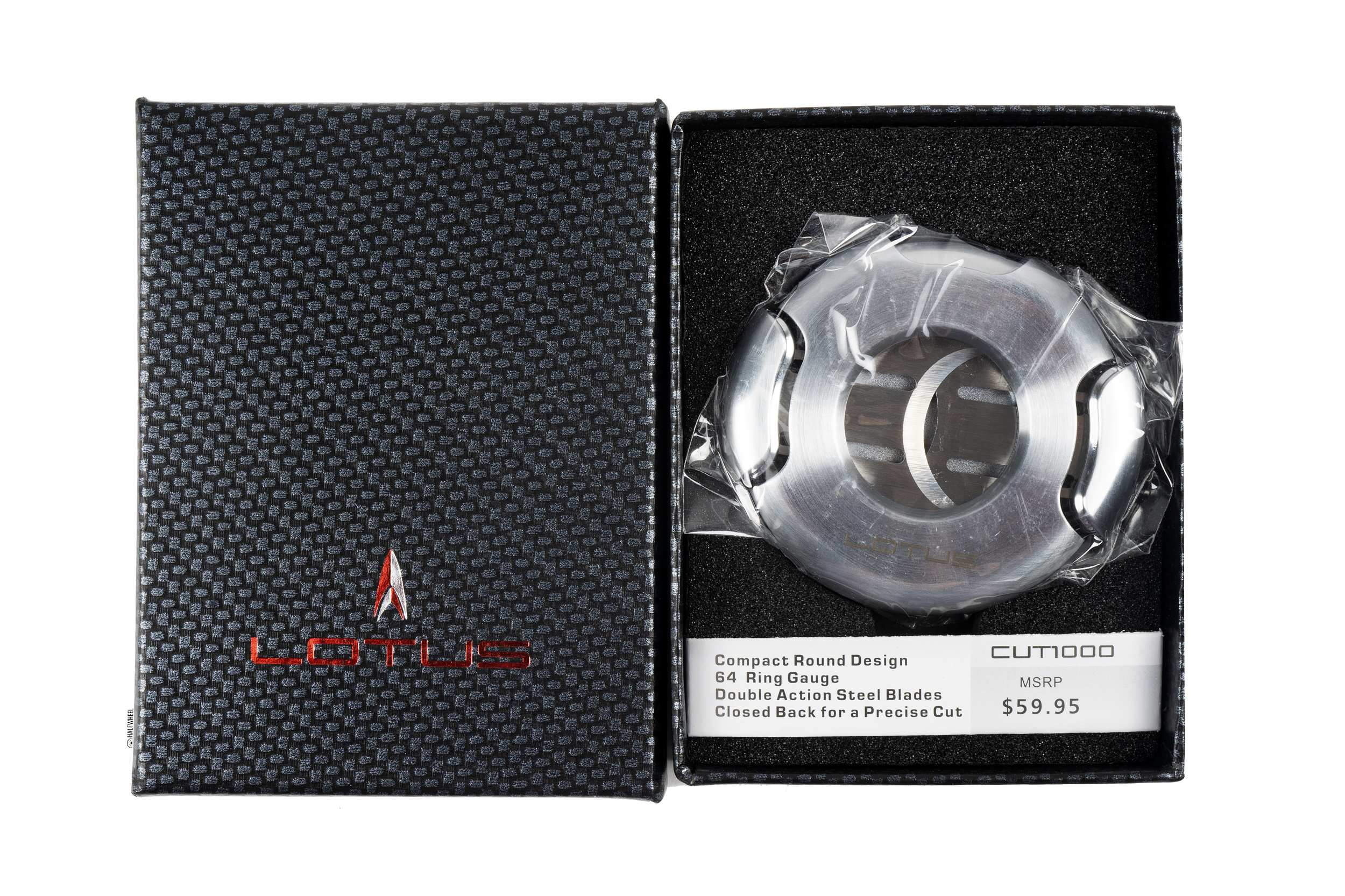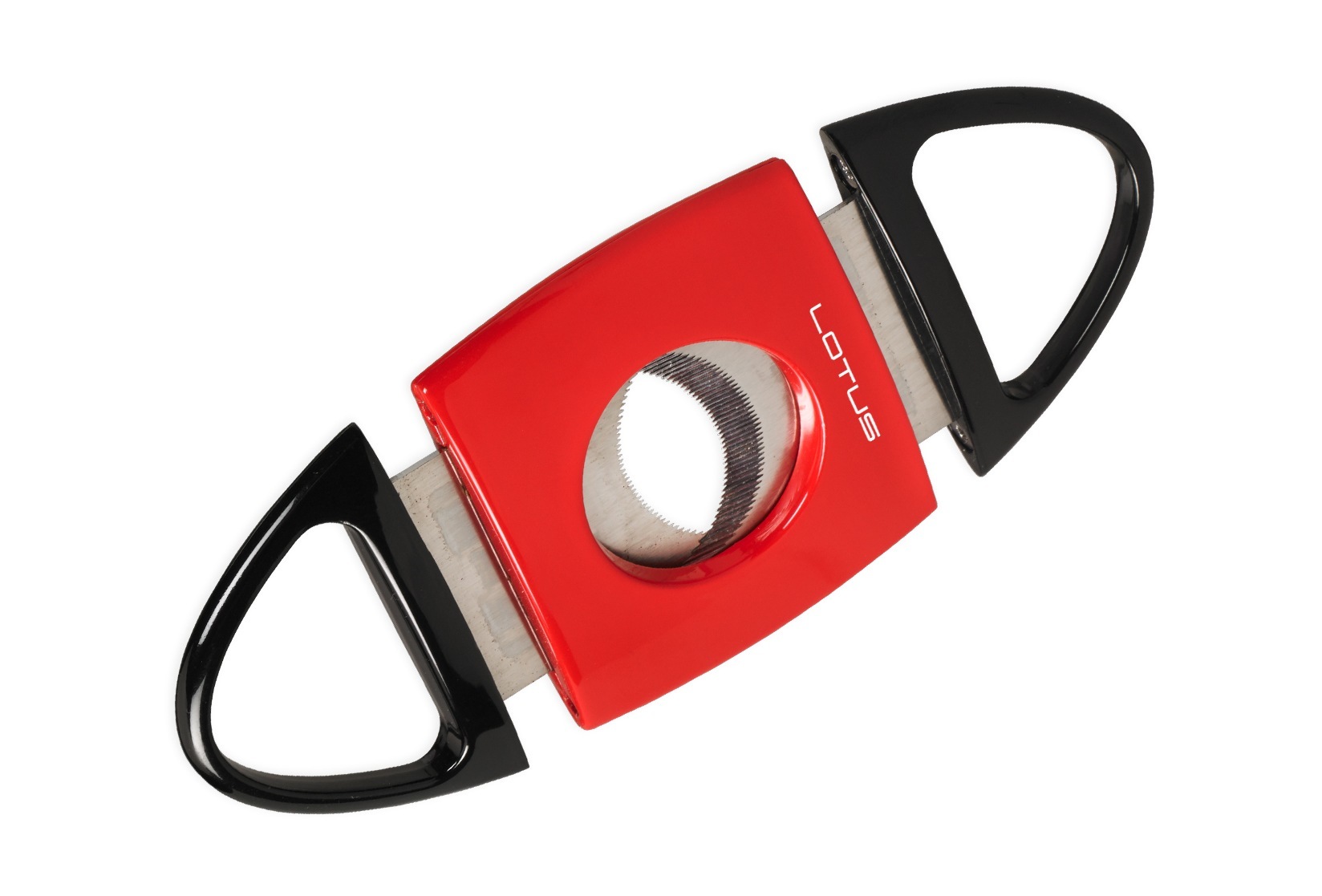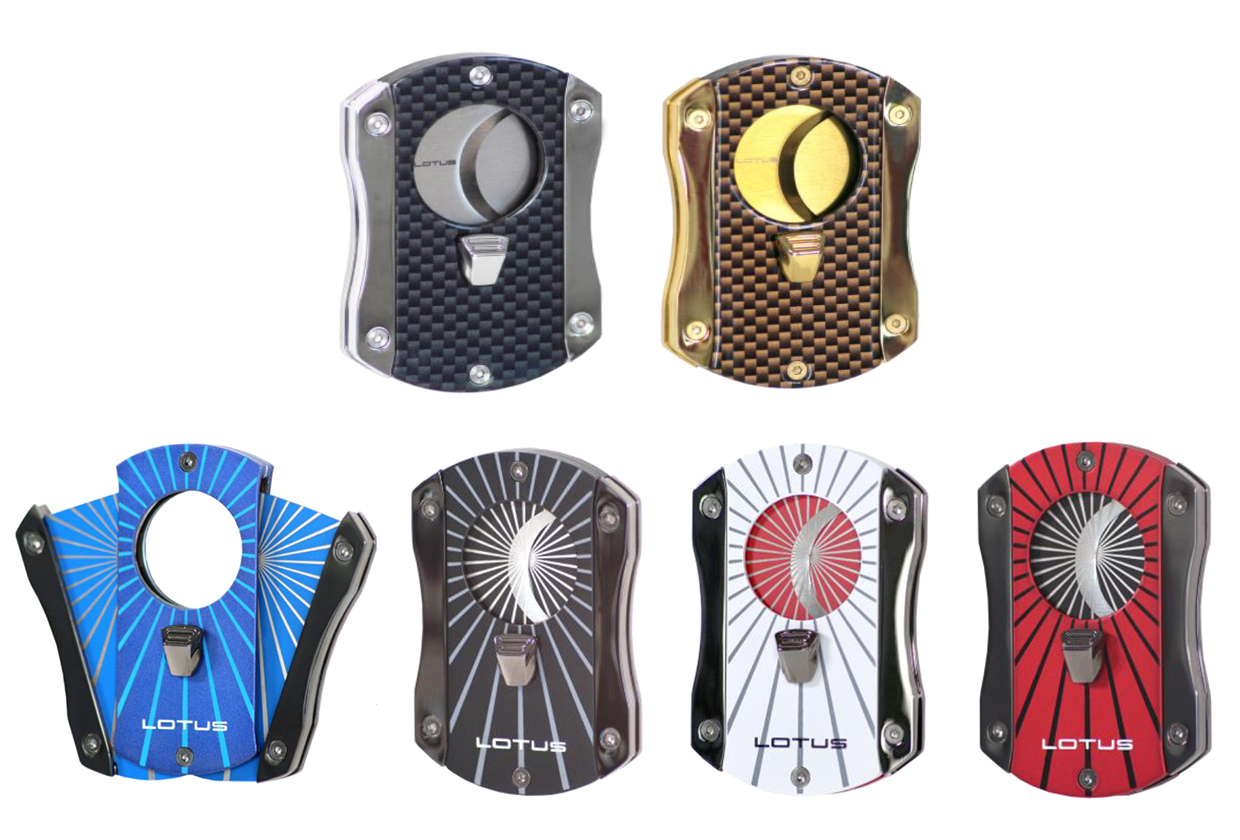In July 2020, The Lotus Group/Integral Logistics announced a variety of new products that would be shipping just in time for summer. Included in that list were the Viper V-cutter, the Pinnacle single action guillotine cutter and a new 15-count travel humidor named the VC-15. However, arguably the most interesting new creation was the Lotus Meteor, a double guillotine cutter enclosed in a round metal body available in five different designs.
WHAT IS IT?
As mentioned above, the Meteor features two blades contained in a circular body that are released via a spring-loaded locking mechanism. Those blades operate independently—which means that the cutter offers either single or double action—and the blades are triggered by pushing in on a button built into the top of the cutter case.
In terms of physical specifications, the Meteor measures 2.27 inches across and is .45 inches thick while weighing in at 3.023 ounces. The cutter also features a backplate, meaning that the amount of cap that can be cut at any one time is limited to about 1/8th of an inch. It is capable of fitting a 64 ring gauge cigar inside of the body of the cutter, although you can obviously cut larger ring gauges if you are just cutting a bit off of the cap.

HOW MUCH DOES IT COST?
The Meteor is currently available in five different finishes, all of which retail for the same $59.99 MSRP:
- American Flag
- Fedora
- Black Matte Crackle
- Chrome Satin
- Woodgrain
HOW DOES IT WORK?
Viewing either the front or the back of the cutter, the button to release the blades is easy to see located on the top of the case. Pushing that button down causes both blades to open in unison, stopping at the end of their journey with a surprisingly loud clanging noise. To cut a cigar, you then place the cap of your cigar into the opening and push the handles of the two blades together, starts the process of closing both blades simultaneously. As the two blades meet in the middle, they cut through the cap and end up where they began with another loud click, where they will stay until the trigger is pushed down again.

THE GOOD
- Cuts Cigars Cleanly — The most important aspect of a cutter is that it does what it is designed to do—i.e. cut the cap off of cigars cleanly and consistently—and the Meteor has no issues with that function. After about a month of use, I had virtually no issues with the cuts I got from this cutter, regardless of the ring gauge or vitola I was using it on.
- Built to Last — Every part I can see is made of a type of metal, and there are no parts that have become loose or slip in any way since I started using it.
- Back Cover Catches Vast Majority of Tobacco Cuttings — One of the advantages of the back cover on this cutter is that any tobacco you cut off of the cigar is caught and held nicely by the closed blades. When you are ready, just push the button to trigger the blades and the remnants fall out wherever you want them to.
- Less Expensive Than You Would Expect — Considering how well this cutter is built, how well it cuts cigars, and how well-designed it is, I would not have been surprised by a priced tag twice as large. At $60, this is a bargain.
- Thin Footprint (But Not Too Thin) — While it is a heavy cutter—see more on that below—it is also has a fairly thin profile, but not so thin that it causes issues with balance when it is actually used.
- Lifetime Warranty — Lotus includes a lifetime warranty with the purchase of a Meteor, although it does not cover damage to the outer case finishes.
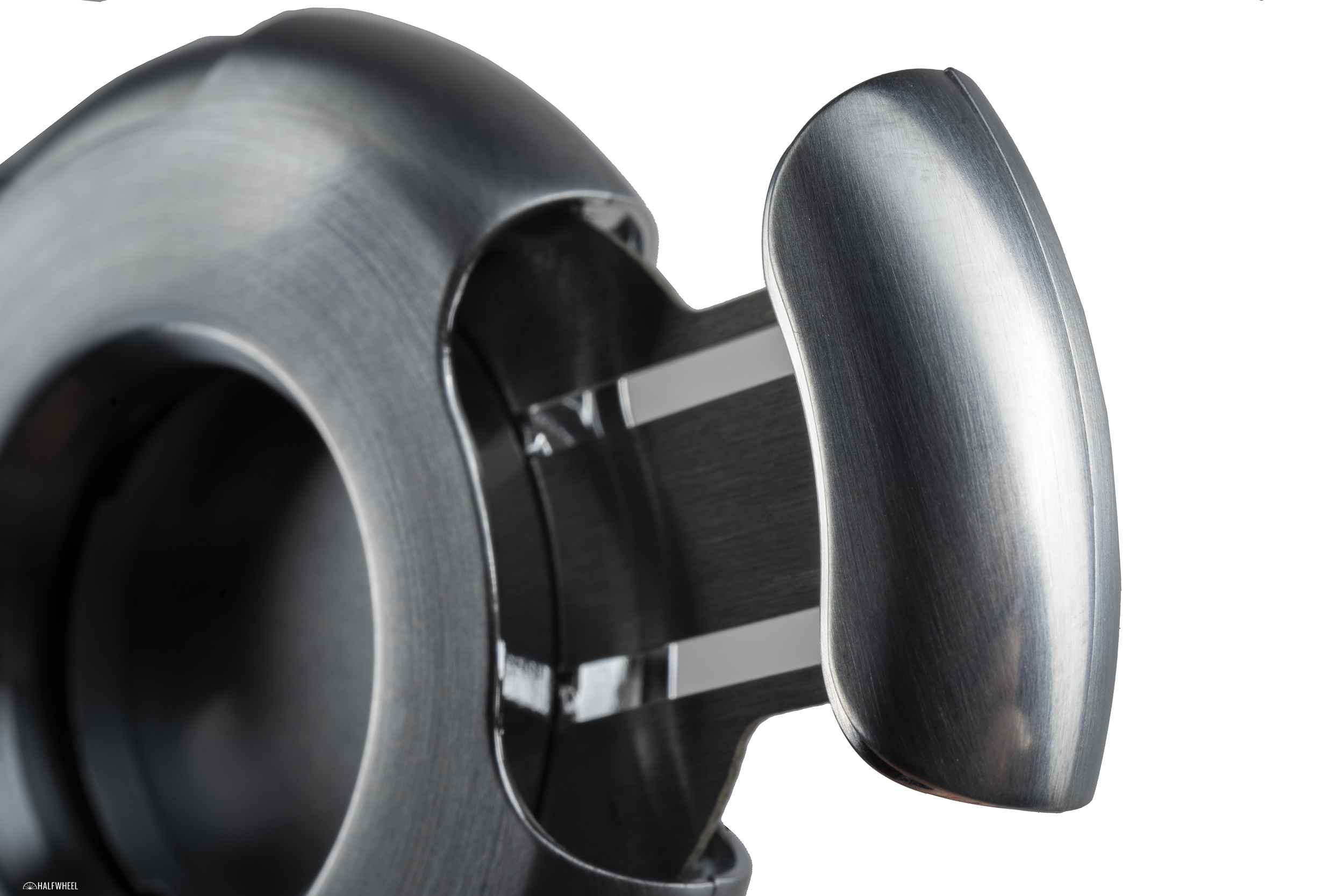
THE BAD
- You Have Virtually No Control Over How Much of the Cap You Cut Off — I have long loathed cutters with backplates on them for one simple reason: it takes away 90 percent of the control a user has when it comes to exactly how much of the cap is cut off past a certain point. You want a standard cut with a standard vitola? No problem. You want a deeper than average cut on a torpedo? Almost impossible without using the cutter two or more times.
- I Can’t See Where the Blade Is Cutting — Along with the above is a totally separate issue: because the backplate and deep body block me from seeing pretty much all of the cap when you I it into the opening, it is extremely difficult to judge where the blades are cutting, meaning I am constantly second-guessing myself before pushing the blades closed.
- It’s Heavy — Being made almost entirely of metal is a good thing when it comes to construction, but I am thinking there is a reason that the weight is not mentioned anywhere on Lotus’ webpage detailing this cutter: at 3.023 ounces, it is noticeably heavier than the weight of both the XIKAR XO and the XIKAR Ensō.
- Chrome Satin Colorway is a Scratch and Fingerprint Magnet — Bad things happen when you carry a cutter with a chrome finish in the same pocket with car keys, and the scratches are almost impossible to miss when they actually show up.
- It Can Only Cut Cigars Up To 64 Ring Gauge — If you smoke a lot of 70-80 ring gauge cigars, this probably isn’t for you.
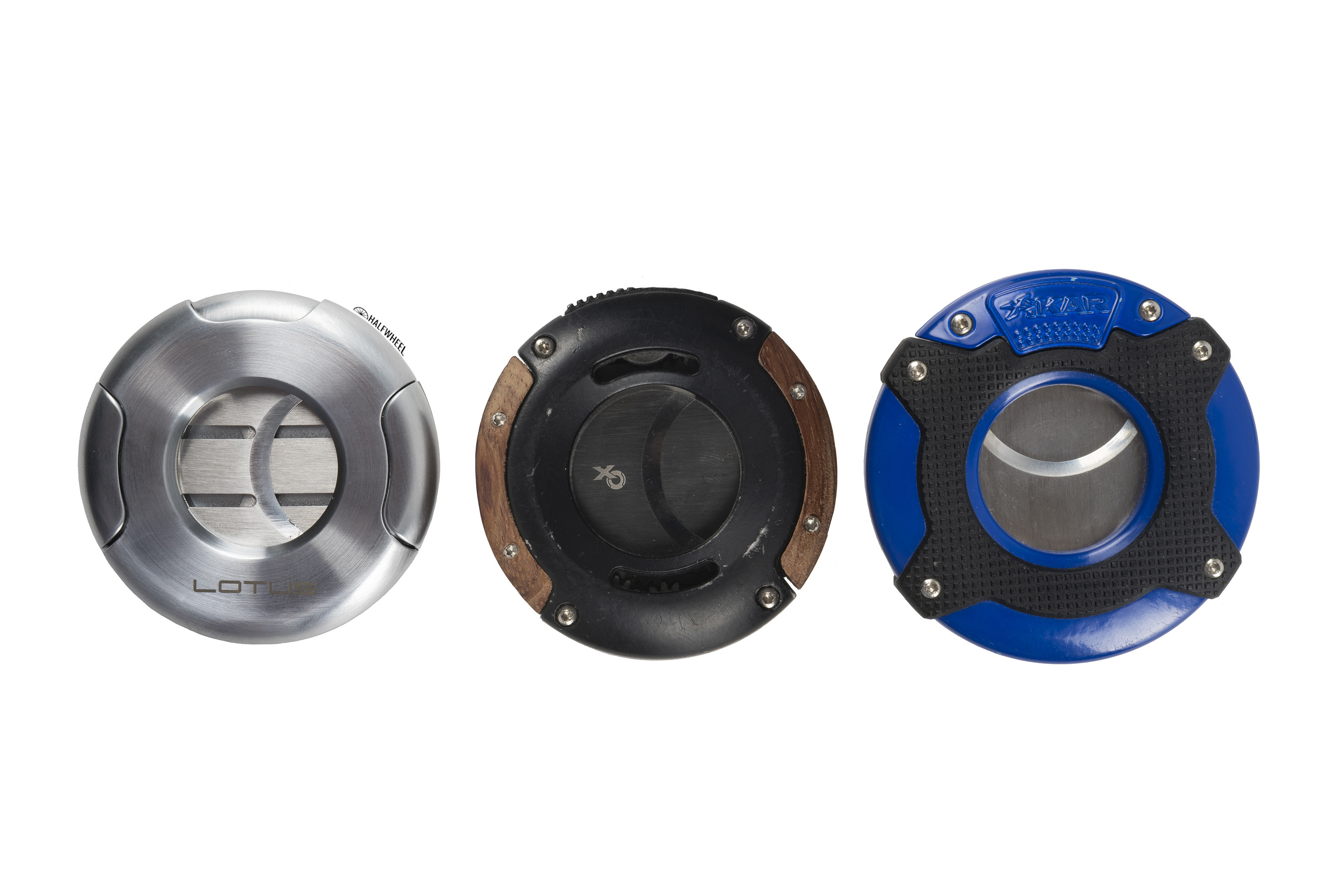
THE COMPETITION
As has been mentioned multiple times above, the main competition to the Meteor is XIKAR’s XO ($150), which—let’s be honest—Lotus essentially copied in a number of very obvious ways. They both cut up to 64 ring gauge cigars and while the XO does not feature a backplate and also weighs less, it is also priced around $100+, which is close to double the price of the Meteor. The one thing the Lotus didn’t copy was the XO’s signature feature: a gear system that means the blades of the XO open and close at the same time. Instead, the Lotus functions like a normal cutter where the blades move independently of one another.
Even when taking the massive price difference into account, I would still choose the XO over the Meteor for a few different reasons: not only does it cut cigars better overall—albeit not by a huge margin—but it also does not have a backplate and it feels more comfortable in my hand when it is being used.
- XIKAR Ensō ($99.99) — It is round and has two blades like the Meteor, but that is where the similarities between it and the Ensō end. For one thing, it is opened and closed with a handle that you push down from the top, and the blades do not move independently. And while it is both thinner and lighter, the Ensō is also twice as expensive as the Meteor, it is not nearly as intuitive to use, and it does not cut cigars as well.
- Elie Bleu EBC-2 ($210) — I have not reviewed this cutter yet, but it is a round design, albeit with blades that function in a different manner than the Meteor. However, it also costs close to four times as much as the Lotus.
- Dunhill White Spot Circular Silver Plate Lined Cigar Cutter ($395) — This is another round option, but it is opened and closed via a handle on the top which only loves the top blade and it retails for almost $400.

SHOULD YOU BUY IT?
Yes.
While I have made my extreme dislike for backplates on cutters painfully obvious, the Lotus Meteor passes the main test that matters with flying colors: it cuts cigars extremely well, both cleanly and consistently. The blades are sharp, the design is eye-catching, the balance is excellent and the cutter is easy to open, close and use. My main issue is the fact that you have almost no control over how much of the cap—and can’t see how much you are cutting with any accuracy—but for those for whom that is not a big deal, the Meteor is definitely an option that should be considered if you are looking for a new straight cutter.



